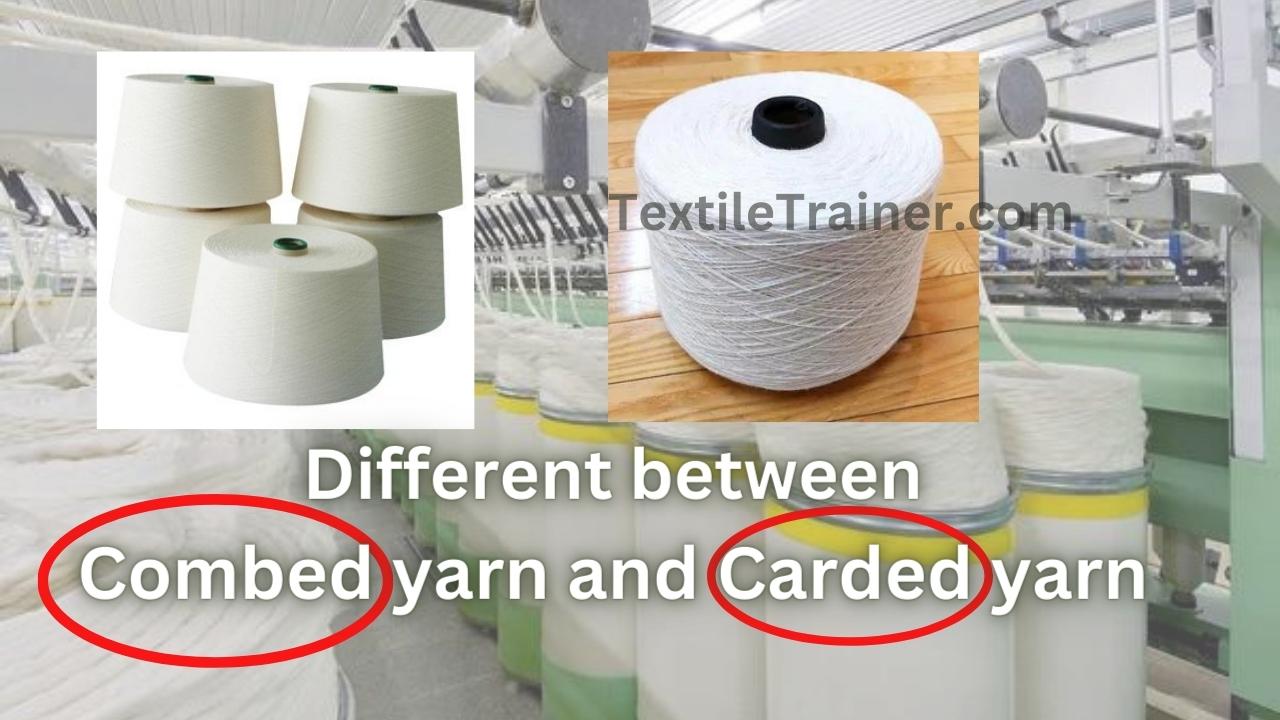Best 8 Function of Carding Machine
Best 8 function of carding machine will be describe in this article. Two proverbs of the experts “the card is the heart of spinning mill” and “well carded is half spun. By this tow proverbs, demonstrated the important of carding machine. There is a dictionary definition for “card” that refers to a wire-toothed brush or machine that contains rows of wire teeth that is used to disentangle fibers, such as wool, before they are spun, in accordance with the dictionary.
The word “card” is derived from the Latin word “Carduus,” which means thistle, whose spiked fruit was used for plucking fiber apart in the past. A pair of hand cards made of thistles that were attached to wooden frames in the fifteenth century were used to comb out and clean cotton and wool fibers prior to spinning.

Function of Carding Machine:
Function of carding machine is described below:
1. Opening into individual fibers:
To get good quality yarn, it is essential to open the fiber. Carding machine open the fiber. While the blow room only opens the raw material into tufts, the card must open to the fiber level. This is necessary for the impurities to be removed and the other operations to be carried out.
2. Elimination of impurities:
Carding machine eliminate the impurities from the raw materials. Foreign matter is mainly eliminated in the licker-in area, but not exclusively. Only a small portion of the contaminants remains with the flat stripping or falls out at other sites. A modern card can achieve an exceptionally high level of cleaning, in the 80 – 95% range. Thus, the overall degree of cleaning achieved by the blow room and the carding room together is as high as 95 – 99%. However, the carded sliver still contains 0.05 – 0.3% foreign matter.
3. Elimination of dust:
Additionally, the card removes many micro-particles bound to fibers, in addition to freed dust that can be extracted by suction as in the blow room. To loosen such particles, significant friction between fibers or metals is required. Both of these are available on the card in a significant amount, so the card is a good dust removal machine in this sense.
4. Disentangling neps:
The number of neps increases from machine to machine in the blow room, but the card reduces the remaining number to a small fraction. It is often misunderstood that neps are eliminated at the card; in fact, they are mostly opened out. Only a fraction of neps escapes the machine through flat stripping.
The following steps improve the disentanglement of neps:
- Using larger cylinder widths will reduce fiber density on the cylinder;
- Closer spacing between clothing surfaces;
- The clothing should be sharper;
- The licker-in speed should be optimal (not too low);
- A low doffer speed;
- A lower rate of throughput.
5. Fiber orientation:
While the card is often credited with parallelizing action, it is not completely justified since the fibers in the web are not parallel, although they do have, for the first time, a certain degree of longitudinal order. In fact, a parallel condition is achieved on the main cylinder but disappears when the web between the doffer and the cylinder forms. The card can, therefore be given the task of creating partial longitudinal orientation of the fibers, but not parallelization.
6. Sliver formation
A suitable intermediate product must be formed in order to deposit fiber material, transport it, and process it further. In extreme cases, card sliver has a count of 3 ktex (new spinning processes) to 9 ktex. In the short-stretched spinning mill, the count generally ranges between 4 and 7 ktex (for direct feeding of draw frames up to 20 ktex).
7. Elimination of short fibers:
As metallic clothing cannot be pressed into and retained to eliminate short fibers, only flats can be considered for this purpose. The ability to select short as opposed to long fibers is based on the fact that long fibers have more contact with the clothing of the main cylinder than short fibers. As a result, the main cylinder continually captures longer fibers and moves them along. Compared to long fibers, short fibers offer less surface area to the main cylinder’s clothing, so they are caught in it, pressed into it, and leave the machine with flat strippings.
However, we must remember that the elimination of short fibers in the card is very small. It eliminates between 1 – 2 percent of flat strippings. Approximately half of the flat strippings contain short fibers. The card effectively eliminates fewer than 1% short fibers. However, this is barely noticeable in the staple diagram, as the inaccuracy of the staple measurement procedure is greater than the change in value.
8. Fiber blending:
The card scarcely improves long-term blending since the material spends too little time in the machine. However, it improves transverse blending and fibre-to-fibre blending because, aside from the OE spinner, the card is the only machine to process individual fibers. Intimate fiber-to-fiber mixing occurs during web formation. To deposit fibers, transport fibers, and process them further, an appropriate intermediate product must be produced first. Generally, short-stack spinning mills use a sliver of 4-7 ktex (for direct feeding of draw frames up to 20 ktex). In extreme cases, card sliver can reach up to 9 ktex (new spinning processes).
The quality of yarn basically depend on carding machine. However, I tied to best to present function of carding machine simply. If you have any question about function of carding machine, feel free to ask me by below comments box.
You May Read:



